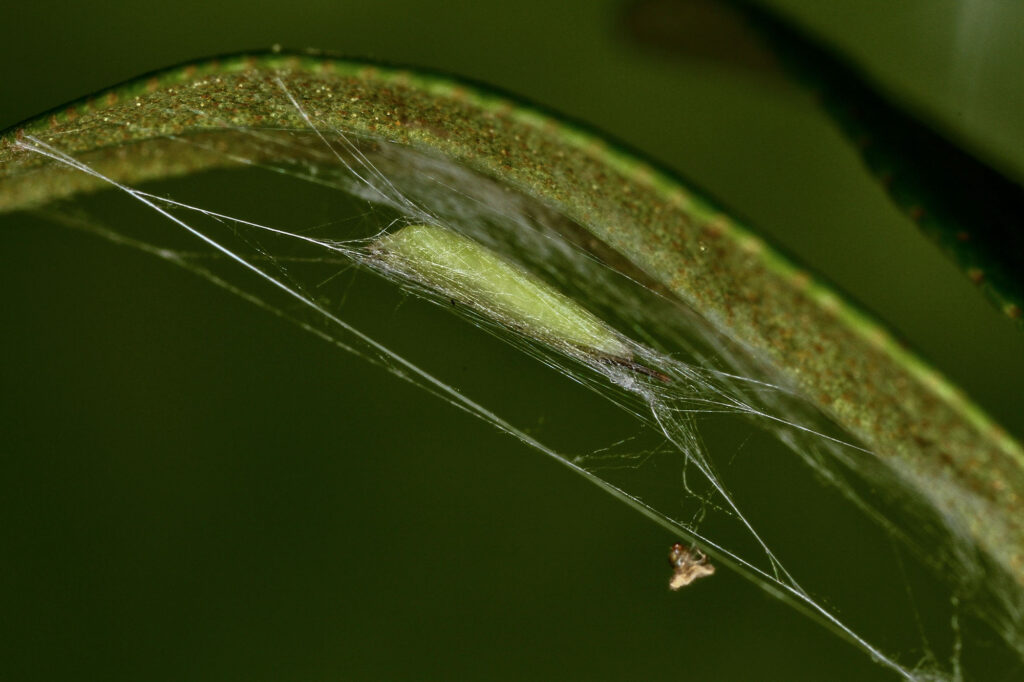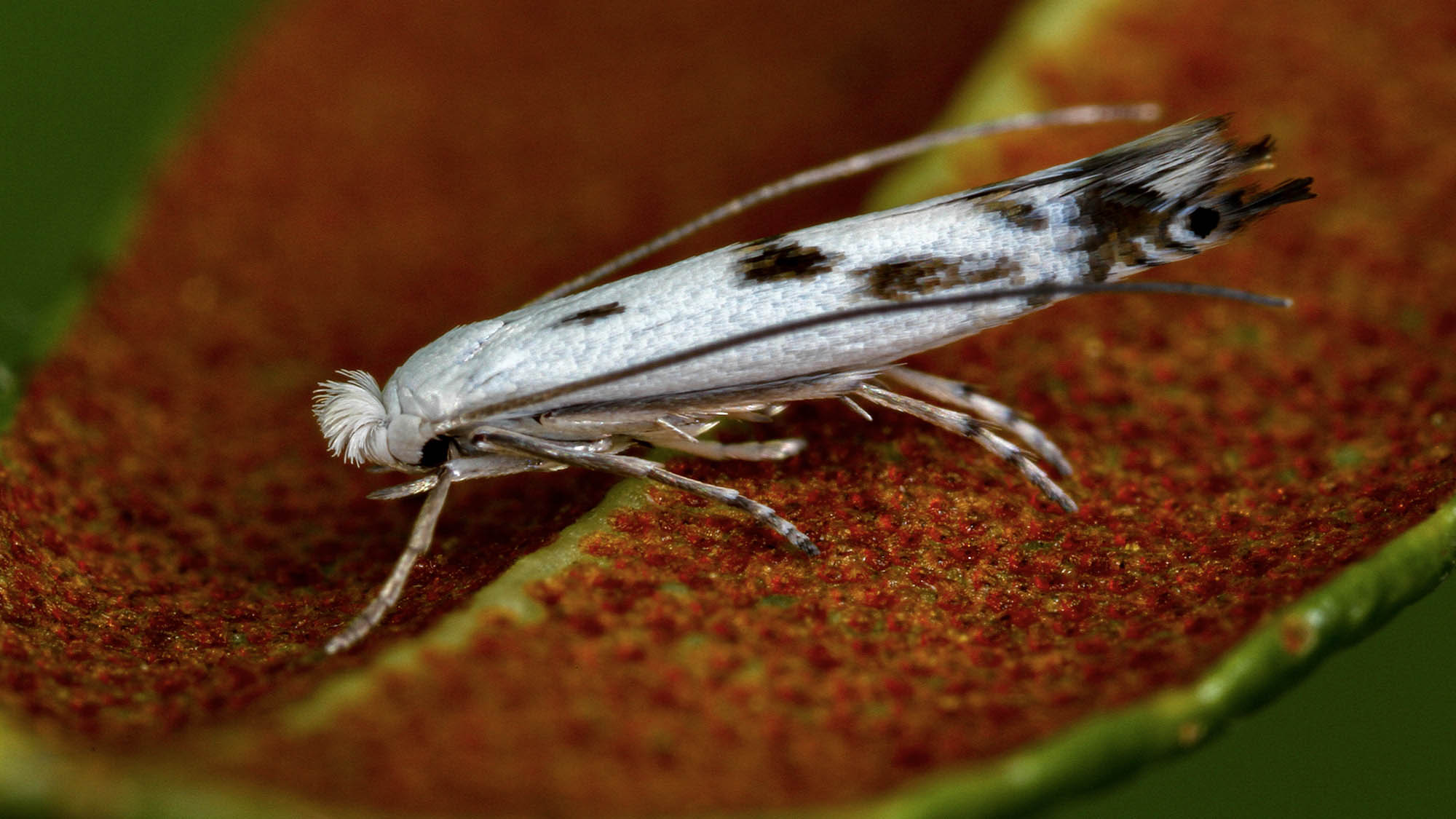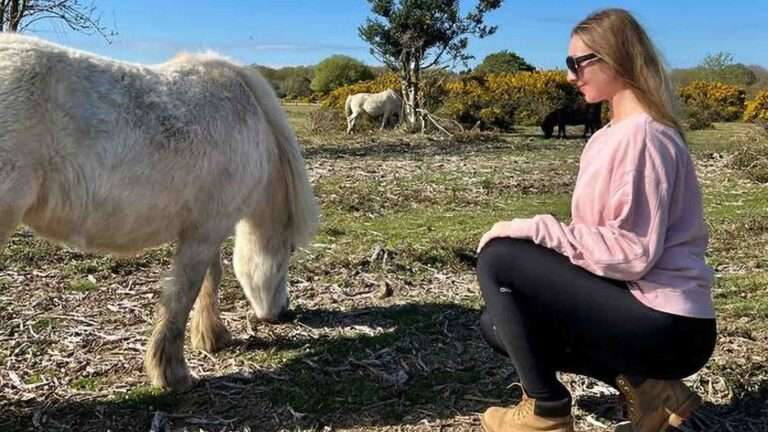This beautiful speckled white moth is of a previously unknown population that has survived isolated hundreds of miles from any similar moths since the last ice age, 12,000 years ago, after it learned to live by eating a plant too toxic for anything else to eat.
The Alpine rose leaf-miner moth, which is a species of a moth not found anywhere within hundreds of miles, survives in the mountains, where it eats the Alpine rose, which is so toxic that it is avoided by other animals and insects.
The rare find was made by Tyrolean butterfly researcher Dr Peter Huemer, who has now confirmed that the moths are of a previously unknown population.
That means that although the species of the moth has been identified, the plants that it lived on died out in that area during the last ice age, and, instead, the new population appears to have learned to feed on an alternative plant, namely the Alpine rose.

(Juerg Schmid/Newsflash)
The caterpillars of the Alpine rose leaf-miner moth live by feeding on the leaves of the plant, which they burrow inside, according to a study published in the specialist journal ‘Alpine Entomology’.
Dr Huemer said that the discovery came about by chance, as it was well known that the Alpine rose (Rhododendron ferrugineum) was toxic, and, therefore, it was never properly studied or even looked at by butterfly and moth researchers.
The plant is distinctive because of its pinkish-red bell-shaped flowers. It is known to be toxic to animals, including humans, and was also supposedly toxic to moths and butterflies until this chance discovery.
The fact that a moth population has developed to feed on it is all the more surprising, given the harsh conditions 1,800 metres above sea level in the Swiss Alps, which see a long period of snow cover.
The plant, which has rust-red coloured spots on its leaves, contains the moderately toxic substances arbutin, arecoline and rhodoxanthin, which discourage it being used as a food plant.

(Peter Huemer/Newsflash)
The plant was, therefore, rarely studied by butterfly researchers like Huemer, but during a survey of moths and butterflies in the village of Ardez in the valley region of Engadine in Switzerland on 29th July this year, he made a brief stop during an overcast day next to one of the bushes and was amazed to find a caterpillar feasting inside one of the leaves.
In a statement issued by the Natural Sciences Department of the Tyrolean State Museum, where he is the head, he said: “The purely accidental sighting of the first caterpillar in an Alpine rose leaf was an absolute adrenaline rush, it was immediately clear that this must be an extraordinary species.”
Over the next two weeks, he and Swiss butterfly expert Juerg Schmid searched the region extensively, this time focusing on the bushes, which were previously rarely looked at, and discovered what they described as a stable population of the moths that had completely escaped identification and classification until now.
Together with Schmid, caterpillars and pupae were sought for documentation purposes in several excursions between the end of July and mid-August.

(Peter Huemer/Newsflash)
The moth lays an egg, which, when it hatches, produces a larva that drills through the upper leaf skin into the leaf interior, which it then proceeds to eat. Because it lives inside the leaf, it escapes the harsh Alpine weather and predators, and creates a tunnel in the thicker-than-average leaf, where it also leaves its faeces.
After feasting on the leaf, it emerges and makes a silk web on the underside of its previous home, from where it later hatches into a moth.
The moths he found belong to a species widespread in northern Europe, northern Asia and North America, known as the the swamp porst leaf-miner moth (Lyonetia ledi).
But although this was confirmed by the examination of morphological features, such as wing colour and DNA comparison (DNA barcodes) with northern European animals, what is bizarre is that the Engadine population is more than 400 kilometres away from the nearest known sites of other moths in the species and where the plant that the moth feeds on died out after the last ice age.
That location is on the Czech border with Austria and other locations even further north.
As a result, the wild rosemary leaf-miner moth lives in northern Europe exclusively on wild rosemary (Rhododendron tomentosum) and bog-myrtle (a flowering plant in the family Myricaceae). However, these two typical shrubs of bogs are missing in the Alps.

(Juerg Schmid/Newsflash)
That said, wild rosemary and the Alpine rose shared the Swiss habitat in earlier cold phases in the past in the High Alps.
It is, therefore, speculated that after the last glacial period and the melting of the glaciers, a transition of the caterpillar from wild rosemary to the Alpine rose as a source of food took place at the Swiss site.
The separation of the areas of both plants, caused in subsequent heat phases, inevitably led to the separation of the butterfly populations.
To find out more about the author, editor or agency that supplied this story – please click below.
Story By: James King, Sub-Editor: William McGee, Agency: Newsflash
The Ananova page is created by and dedicated to professional, independent freelance journalists. It is a place for us to showcase our work. When our news is sold to our media partners, we will include the link here.




